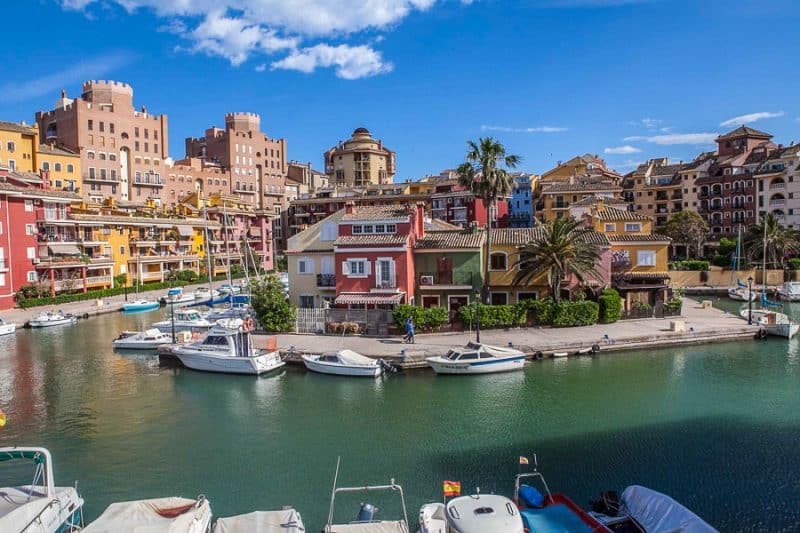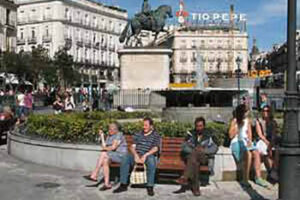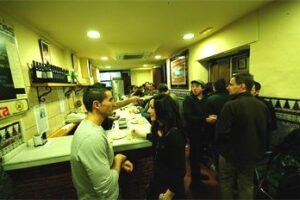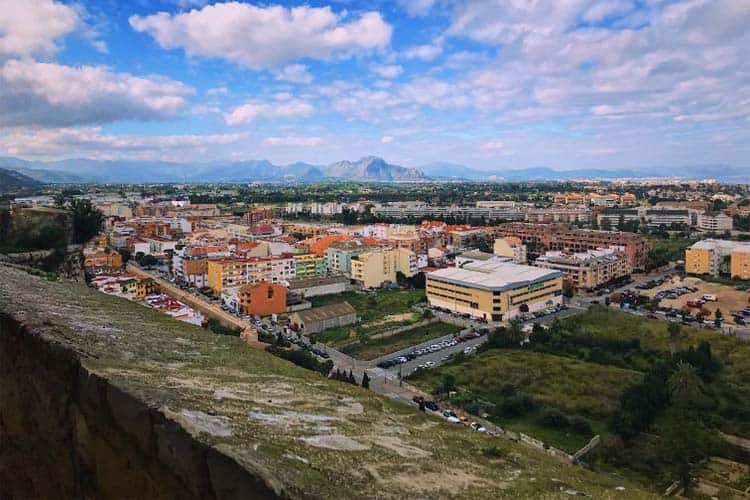
Rich History, Magnificent Views, and Local Cuisine in Alicante!
By Olivia Gilmore
Old and New in Dénia
The port city of Dénia, in the province of Alicante, Spain, was dedicated to the goddess Diana by the Romans and is known for getting over 3,000 hours of sunlight a year.
The 20 kilometers of Costa Blanca coastline provide sandy beaches, caves with diving opportunities, and natural sea reserves teeming with marine life.

Dénia combines the old and new with its lavish nightlife, prehistoric monuments, and cosmopolitan shops.
Shopping enthusiasts can be found on the city’s main avenue, Calle Marqués de Campo, which is lined with a plethora of diverse restaurants, bars with live music, and people socializing amongst friendly laughter.
Late night partygoers typically head to the Zensa Marina, where there are outdoor cocktail bars overlooking the sea.
The Castle of Dénia can be reached by traveling through a mountain tunnel that runs underneath the castle that then leads into the old town.
The Muslim Arabs originally built the castle fortress, and it includes an archaeological museum and offers views from the city’s highest point.
Earning the well-deserved title of “Creative City of Gastronomy” by UNESCO in 2015, Dénia takes advantage of its seafood abundance in a multitude of different authentic dishes.
The most unique and distinct Dénian dish is the traditional “Arroz a Banda,” which is a rice dish mixed with “espencat” – grilled vegetables and “la llandeta” – fish stew.
To ensure an authentic version of this fisherman’s meal, please your taste buds at La Seu where chefs can be viewed crafting the local cuisine alongside the ultra-modern decor.
Graveyard Galore in Alcoi
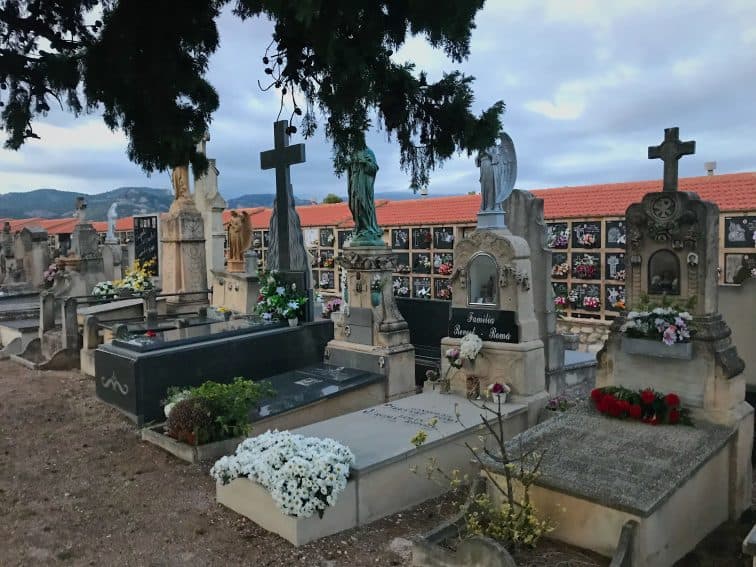
Surrounded by two natural parks, Alcoi is a municipality encircled by mountain ranges and innate beauty in the province of Alicante. Within the protected area of Font Roja Natural Park, a sanctuary is dedicated to la Virgen de los Lirios and visitors can hike through the Mediterranean forest to see where her apparition is still said to linger.
Speaking of ghosts, the 19th century San Antonio Abad Cemetery in Alcoi is a favored location for its Sezession style funerary sculpture, unique architecture, and well…it’s unearthly energy.
Listed on the European Cemeteries Route, its most striking components are the nun’s enclosure, underground galleries, and the free-standing family vaults.
Underneath the city’s public square called Plaça d’Espanya, lies the subterranean all-white Llotja de Sant Jordi event space that hosts temporary exhibitions.

The space is enclosed by an arched ceiling that resembles a whale’s rib, a famous design the Spanish architect and creator, Santiago Calatrava, often uses.
Whether you enjoy a craft beer or not, getting to know the owners of Cerveses Lluna and hearing their story is well worth a visit to their organic brewery.
Maria Vicente and David Seguí are the proud owners and always work with three words in mind…artisan, cooperative, and ecological.
“Working in Cerveses Lluna keeps alive our desire to learn and enthusiasm to improve every day,” says David Seguí.
Fan favorite beers include Happy Flower amber ale, Bruna barley malt, and Eclipsi wheat cherry ale.
Balloon Rides in Bocairent
The charmingly quaint town of Bocairent is a hidden gem with a maze of cobblestone streets adorned with potted plants, venerable chapels, and “Les Covetes de Los Moros” (the Moorish Caves).
The Moorish Caves are nothing short of a masterwork with their hole-shaped “windows”, multi-level chambers, and installed metal steps that allow visitors to investigate the ancient phenomenon for themselves.
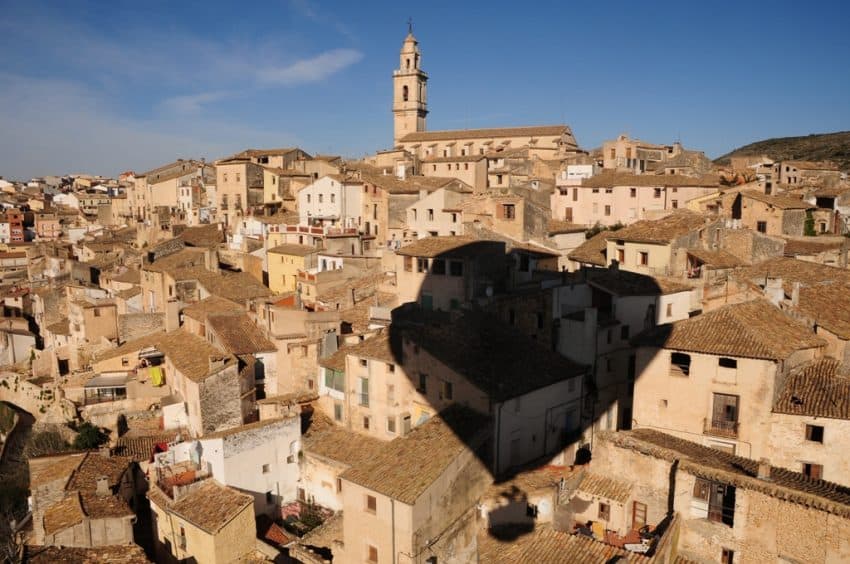
Although difficult to date, the caves were probably constructed during the Hispano-Arabic period and functioned as storage rooms for the Berber or Agadir peoples.
Inside the Colomer Caves, there is an interpretation center where visitors can look out of the cave-like “windows” and watch a short documentary about their history.
Likewise, visitors can crawl through tunnels that lead into the Ice Caves, which were used to collect snow later to be sold to only the wealthiest of the bourgeoisie.
The best way to grab that perfect panoramic shot of this tiny hill town is on a personal hot air balloon flight with Totglobo. Float fearlessly along the horizon and feel the tranquility that the rolling hills below have to offer. Book a trip at sunrise to capture the most unforgettable view.

Xàtiva, The City of the Borgias
The capital of the region of La Costera, Xàtiva is distinguished by its fortress walls that extend down from the Castell de Xàtiva and its Romanesque style gothic architecture.
Xàtiva’s past is best understood through the exhibitions at Almodí Municipal Museum, where the reproduction of the Neanderthal skull found in Cova Negra sits on display.
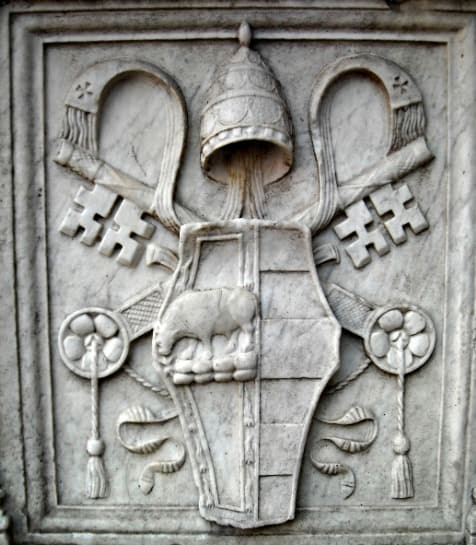
The Borgia Route
Xàtiva has the privilege of being the birthplace of the Borgias, an all-powerful and dynamic family that existed during the Renaissance.
The legacy of this family can be discovered through the Borgia Route, which points out the notable buildings and places that relate to this notorious bloodline.
Sightseers should also check out Sant Feliu Church and Hospital Reial at night time to embrace architectural elegance Xàtiva has to offer.
For more information on Valencia and what the region has to offer, visit Spain’s official tourism website.
The author was hosted by the Tourism board of Spain for this story, but the opinions are all her own.
- Discover the Best New York Attractions: A Comprehensive Guide - April 13, 2023
- Old World Charm in Alicante, Spain - January 24, 2019
- Can’t help but love Northern Valencia Spain - January 9, 2019


